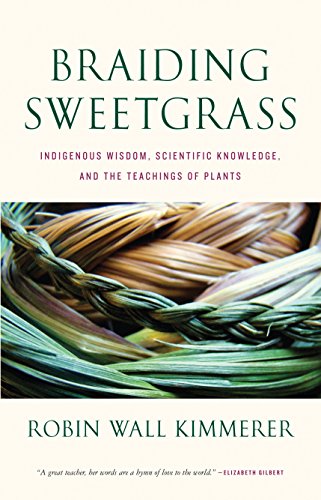The following is from Bud Nye, A Deep Green Resistance supporter in Washington State:
_____________
After reading Pandora’s Seed, Why the Hunter-Gatherer Holds the Key to Our Survival (2007), by Spencer Wells, here are some of my thoughts:
Early in the book I sensed a technotopian slant. Sure enough, as I read more it became clear that, like so many technological utopian people today, Wells seems seriously to believe that we can steal energy from Earth’s ecosystems at the scale of our fossil fuel use without massively damaging those living systems with their billions of living beings.
He seems to have no awareness of how destructive dams are, for example, and he holds by the magical, grandiose idea that we can do to wind, tidal, and other sun powered ecosystems what we have done to the river systems, and we can presumably do it without causing similar kinds of damage with similar unintended consequences: largely unacknowledged atrocities.
As much good information as he provides in his book, Wells ultimately supports, and subtly but powerfully encourages others to support, the Earth-killing megamachine of the now global military-industrial-scientific-congressional complex. He makes this crystal clear with his statement in the last chapter, after listing a number of movements that have worked against the machine, that “Over the past half century another anti-progress trend has been spawned, one more widespread and potentially dangerous than the more limited moments of the past….”
At best, he is clearly ignorant of the fairly obvious fact that we must learn to live within the limits of daily sunlight–while ALSO allowing millions of other animal and plant species, many billions of living beings, to use that daily sunlight–or we will perish. At worst, he is fully aware of these real, biological limitations and is an industrial corporate shill consciously and actively spreading their propaganda as widely as possible.
The truth about Wells probably lies somewhere between these two extremes, with a complex mixture of both. Positive, optimistic thinking actively encourages and supports willful blindness, and Pandora’s Seed serves as a good example of this. Please don’t get me wrong. I think that this book does offer much of value. Unfortunately, Wells severely shoots himself in the foot with his unwarranted optimism about his often mentioned future “several hundred years from now” (apparently blissfully ignorant of the Canfield ocean CO2 level preconditions that will have developed by around 2100), and the alleged, politically correct “alternative energy sources”.
I do wonder what others think.
_____________
Adapted from Humanity, A Moral History of the Twentiety Century by Jonathan Glover (1999):
Rational self-interest can be turned upside down. In ordinary life restraining social pressures make killing unthinkable. In industrial capitalism and civilization the effect of their removal, or even reversal, is dramatic.
Industrial capitalism and civilization-building also require overcoming the moral resources. Capitalists and civilization builders need to escape the inhibitions of human responses: of respect and sympathy for others. They need to escape the restraints of moral identity: of their sense of not being a person who would wound and kill other living beings.
Mostly, the moral resources fail to prevent killing via industrial capitalism because they are neutralized. Capitalists, and the many associated, supporting military, scientific, and congressional civilization-building bureaucrats, need to produce something close to a “robot psychology”, in which what would otherwise seem horrifying acts they can carry out coldly, without inhibitions by normal human responses. Sometimes the moral resources are not so much neutralized as overwhelmed.
There are the altered emotional states induced by industrial activities such as mining, dam building, oil and coal extraction, deforestation, desertification, ocean life mining, committing assassinations, genocide and mass extinctions, and so on.
The control and dominance inherent in industrial capitalism and civilization-building have a deep emotional appeal. People find actions that they would never have thought themselves capable of suddenly appearing, as if they were suddenly released, or as if they were the result of an inner explosion. Distancing from other living beings–both within our own species and, certainly, from all other species–is part of a defensive hardness.
Note this today: A very sad thing happens here now–to everyone. It happens slowly, gradually, and at a distance so no one notices when it happens. We begin slowly with each unnoticed and unaccounted for death and casualty until there are so many deaths and so many wounded, we start to treat deaths and loss of limbs, both of our own and of other living beings, with callousness, AND IT HAPPENS BECAUSE THE HUMAN MIND CAN’T HOLD THAT MUCH SUFFERING AND SURVIVE.
Few of us seem willing to comprehend the horror now unfolding around us and within us via civilization and industrial capitalism. And, as in war, fewer still have the willingness to act in order to stop the killing.
Bud Nye Tacoma, WA







 Excerpt from the book’s introduction:
Excerpt from the book’s introduction: